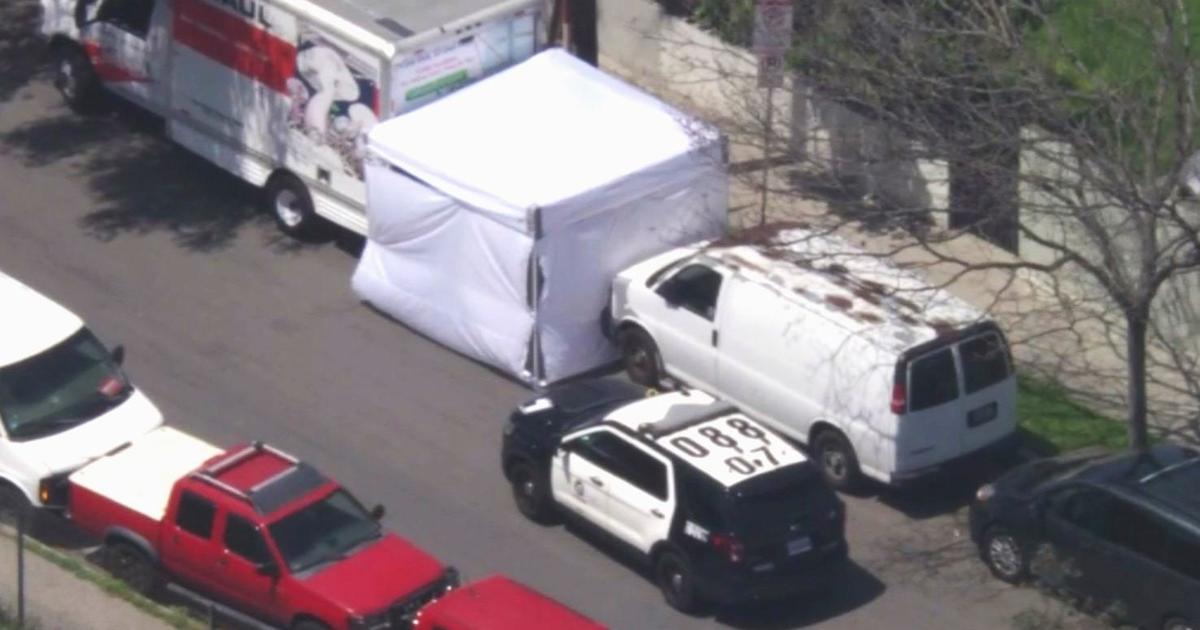Salton Sea The Culprit Of SoCal Stink
SANTA ANA (AP)— After a day of "odor surveillance" and other scent-based sleuthing, Southern California air quality investigators confirmed Tuesday what they had already expected — that a pungent, rotten-egg aroma that stretched across the region came from the Salton Sea.
Investigators from the South Coast Air Quality Management District collected air samples, modeled weather patterns and measured hydrogen sulfide levels to determine that Monday's stench came from the saltwater lake 150 miles southeast of Los Angeles, as strong winds from a storm churned the water and stirred up foul-smelling gasses from the lake bottom, where they normally are trapped.
A recent fish die-off was likely a contributing factor, said Andrew Schlange, general manager at the Salton Sea Authority.
"We now have solid evidence that points to the Salton Sea as the source of a very large and unusual odor event," AQMD Executive Officer Barry Wallerstein said in a statement.
Wallerstein said the agency sent technicians trained to gauge the severity of smells across the agency's four-county jurisdiction, where they conducted "odor surveillance."
The air samples showed that levels of hydrogen sulfide, which has an unmistakable rotten-egg odor, were highest around the lake and grew weaker at bigger distances.
Modeling showed that a massive thunderstorm could have churned up bacteria and released the stench into the air, where it became trapped by low-hanging clouds.
The smell was strongest in the Riverside County town of Mecca, which had far worse problems Tuesday as torrential rains caused flooding in some areas.
Investigators also ruled out other possible causes like landfills or oil refineries.
The AQMD never had any other significant candidates for the odor's cause, but they and others familiar with the sea still had doubts the wind could carry the stench more than 100 miles, through Riverside and San Bernardino counties through Los Angeles' San Fernando Valley and all the way to Ventura County on California's Central Coast.
"The problem I'm having is the magnitude of the area that was covered by the odor itself," Schlange said earlier Tuesday. "But I guess it can happen under the right conditions, and we had those conditions, apparently, the other night.
"What happened gives us an opportunity to let people know that the Salton Sea is dying and that we need to fix it," he said.
The massive, dying lake is plagued by increasing salinity, receding shorelines and periodic fish die-offs caused by plummeting oxygen levels in its briny waters.
Created in 1905 when floodwaters broke through a Colorado River irrigation canal, the 376-square-mile Salton Sea is bigger than Lake Tahoe but is only 51 feet deep at its deepest spot and has no outlet to the ocean. Ninety percent of its water comes from agricultural runoff from the nearby Imperial, Coachella and Mexicali valleys — a fact that gives the lake its unique soup, but also causes its many problems.
The lake, which is 235 feet below sea level, is 50 percent saltier than the ocean, and salinity levels are expected to increase even more as it shrinks.
The lake is a popular recreational destination for boaters, bird watchers, campers and anglers who fish for species introduced there.
The rising salt level, however, has meant the demise in the past decade of several big game marine fish species. The only species remaining are tilapia, which have gradually adapted to the saltwater, and the desert pupfish, said Timothy Krantz, an environmental studies professor at the University of Redlands.
Even those species are now struggling, and there have been fish die-offs every summer in recent years when the water heats up and oxygen levels drop, said Krantz, who has also served as the Salton Sea program's database director for 15 years. Summer temperatures can soar to 120 degrees or more.
More than 400 species of migratory birds have been recorded at the Salton Sea, making it host to the highest biodiversity for bird species in the U.S.
The birds, however, will eventually be threatened by the lake's rising salinity as fish die-offs remove their main food source.
The lake's depth has dropped in recent years, creating exposed lake bed that generates dust. By 2018, the depth is expected to drop another 15 to 20 feet, exposing 140 square miles of lake bottom and its dust, Krantz said.
"That's yet another huge problem that's impending," he said. "There is hope, but something absolutely has to be done. It's not just about birds and wildlife anymore. It's about human health issues and averting a potential air pollution disaster."
The authority has a plan to save the sea, but has struggled for years to get funding and political muscle behind it. In 2006, various estimates put the cost between $3 billion and $9 billion, Schlange said.
The plan involves stabilizing the sea level by cutting the body of water in half and allowing part of it to dry up, he said. The dried lakebed could host extensive geothermal and solar fields that would mitigate the restoration cost and provide power for millions of homes.
Officials would then work to reduce the salinity in the remaining lake.
"It's exciting to think about trying to fix it, and it can be fixed," Schlange said. "What we need is for the public to understand ... that this is likely to happen more often as time goes on, and we need their support to find a way to finance and pay for this thing."
Strengthening breezes in the area Tuesday dissipated the smell, much to the relief of residents.
At the peak of the stench Monday, residents from Riverside County to the San Fernando Valley north of Los Angeles lit up switchboards and social media to make a stink about the stink. The district was flooded with more than 200 complaints from across much of its 10,000 square miles.
(© Copyright 2012 The Associated Press. All Rights Reserved. This material may not be published, broadcast, rewritten or redistributed.)



